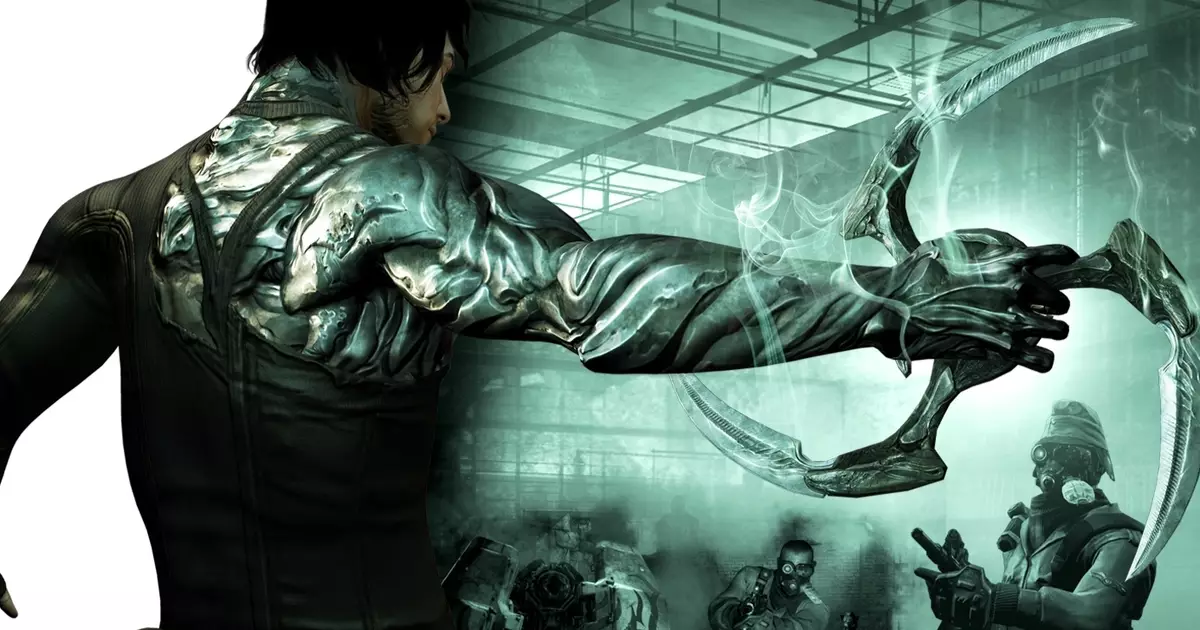Digital Extremes, a studio that rose to prominence through its collaboration with Epic Games on the Unreal Tournament franchise, stepped into the spotlight with the 2008 release of Dark Sector. Although not much remembered today, this game served as an experiment in a gritty action genre that mixed conventional storytelling with a unique gameplay mechanic—the glaive. This weapon, often described as a pointy boomerang, allowed players to engage both in combat and puzzle-solving, showcasing an early iteration of gameplay mechanics that would later find a more polished form in Digital Extremes’ more successful endeavor, Warframe.
Set in a present-day universe plagued by the sinister Technocyte bioweapons, Dark Sector attempted to offer a grounded narrative in an era filled with games inspired by action films. While initially envisioned as a sprawling sci-fi adventure complete with an extravagant mechsuit, the developers reigned in the concept to align with market expectations of the mid-2000s. This pivot, although aiming for relatability, ultimately diminished the potential for innovation and flair, resulting in a game that—while featuring an engaging mechanic—felt derivative and forgettable.
The Forgotten Glaive
At its core, the glaive served as both an inventive tool and a marketing gimmick, emblematic of the era’s trend of creating protagonists equipped with signature weapons. However, players found the gameplay to be a mixed bag. While the glaive’s multifaceted use hinted at deeper mechanics—such as collecting objects and engaging with the environment—it was, more often than not, overshadowed by mediocre level design and uninspired narrative elements. The novelty of the glaive couldn’t fully compensate for the game’s shortcomings.
Despite languishing in relative obscurity, Dark Sector’s legacy is complex. Looking back, it seems as though this title acted not as a standalone success but rather as a foundational stepping stone leading to the success of Warframe. After its release, Digital Extremes revisited their original ambitions and transformed what they had learned into something that resonated with players on a larger scale.
Warframe, released in 2013, not only incorporated aspects of Dark Sector but also magnified them significantly. The once-derivative design transformed into a vivid, sprawling universe filled with unique lore and character options. Players encountered engaging combat mechanics paired with visually striking environments, all enhanced by a free-to-play model that captured the industry’s attention. Warframe, adorned in heavy armor and encapsulating exuberance, expanded upon everything Dark Sector attempted but ultimately fell short of achieving.
A slew of updates and expansions have continuously evolved Warframe, turning it into a community phenomenon. The game’s complexity and plethora of features initially draw in newcomers but can also alienate long-standing fans. Such a duality reflects how game development can spiral into a convoluted tapestry that sometimes distances itself from its original fanbase.
As the gaming community anticipates Warframe’s upcoming expansion, 1999, Digital Extremes appears to be readying itself for another leap. This time, they’re exploring the realm of fantasy RPGs with their newest project, Soulframe. Unlike the sci-fi aesthetics of their previous titles, Soulframe promises a departure into a realm of magic, myth, and mystery. This pivot indicates the studio’s willingness to evolve its repertoire beyond just space ninjas.
Despite being less discussed, Dark Sector still serves as a point of reference, providing not only a nod for fans of its gameplay mechanics but also a glimpse into Digital Extremes’ growth. The studio has not only learned from its past missteps but has utilized them to create experiences that captivate audiences. As players grip their glaives and prepare to dive into new worlds, it becomes clear that the journey from Dark Sector to Warframe—and now to Soulframe—encapsulates the essence of experimentation, creativity, and evolution in game development. Reflecting on this trajectory raises questions about whether future titles will follow suit and how myriads of memories will shape what comes next.

